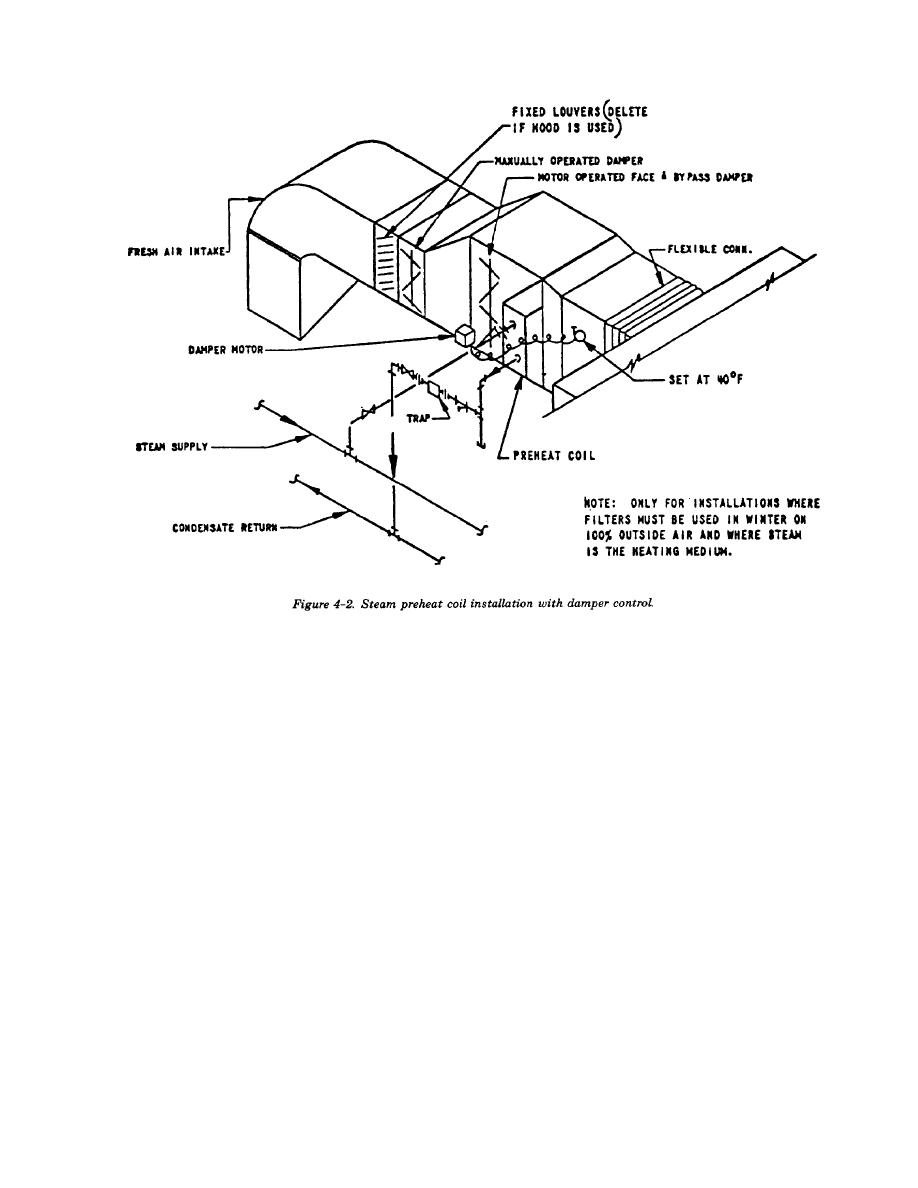
TM 5-852-9/AFR 88-19, Vol. IX
various locations, orientations, and structural features should be considered to minimize these problems. If
possible, the exhaust should be located on the downwind side of the building. Exhaust openings can be
installed through the roof or, where buildings are elevated on piles above grade, through the floor. Under-
floor and wall exhausts should be directed horizontally to keep heated air from contacting pilings or the
ground, and degrading the building foundation. Figure 4-3 illustrates what can happen when moist air
condenses on the cold metal surfaces and accumulates into a frozen ice mass. Buildings should be slightly
pressurized to reduce or eliminate draft through exhaust and other openings.
(b) Intake openings. Where no high winds occur, intakes can be installed directly to the outside
with a stormproof louver. Hoods with a series of baffles should be used where there are high winds. The
baffles are placed to cause the air path to change, which drops most of the snow, rain, and other foreign
particles out of the air stream before it enters the intake duct. Refer to paragraph 2-9 in this manual for
additional information and Figures 2-4 and 2-5 on hood design.
(c) Bird screens. To reduce frost closure, install bird screens only (no insect screens) on intake
and exhaust openings. In temperatures below approximately 200 F, frost accumulation may close the insect
screen openings very rapidly. At -30EF, a 1/2-inch-square mesh bird screen has frozen closed in 6 hours. To
reduce such closure, install a 1-inch-square mesh screen which can be removed during summer operations.
Removable insect screens can be utilized during warm weather.
(3) Frosting of filters in ventilation systems. Icing and frost closure occur when saturated freezing
air, usually below -20EF, is brought in through the filter. The same problem can occur when fresh air intakes
are too close to the exhaust openings and plumbing vents. Since fresh air intakes, including filter banks, are
generally under negative pressure, care should be taken to seal openings and penetrations that permit more
humid air to enter the intake duct or filter bank. Several methods of correction are possible. A preheat coil
can be installed ahead of the filter to heat the air to 30EF, but that coil can plug with dirt, lint, and other
material during normal summer operation. Best results can be obtained by removing the air filters completely
4-7


 Previous Page
Previous Page
